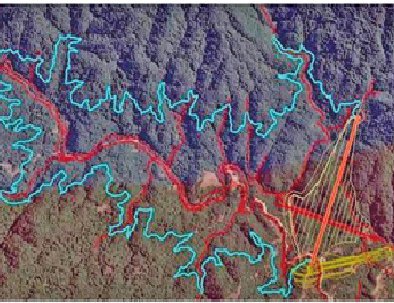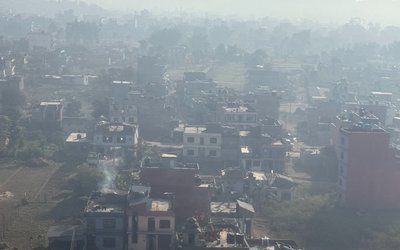
Conservation communities have repeatedly appreciated Nepal's continued efforts of over five decades in protecting areas and species of national and international importance and managing large chunk of pristine wildlife habitats from Terai to high mountains. About 23.4 percent of the total area is now managed in 12 national parks (NPs), 1 wildlife reserve (WR), 1 hunting reserve (HR), 6 conservation areas (CAs) and 13 buffer zones (BZs) for conservation of ecosystems and biodiversity.
Importance of categorising protected areas (PAs) into NP, WR, HR, CA and BZin Nepal and upgrading of WRs into NPsrequires clear understanding at all levels. The Koshi TappuWR,the Ramsar site, is expected to remain as it is. In general, human activities are not allowed within NPs and a NP is not downgraded to other categories of PAs. This helps to understand why Nepal upgraded Parsa and SuklaphantaWRs into NPs.
The National Parks and Wildlife Conservation Act (1973 with amendments) has defined these categories and includes provisions for gazetting and degazetting NPs, WRs and CAs. The Act prohibits number of activities within NPs or WRs and it empowers the government to prepare and implement guidelines and procedures for the implementation of laws. In the recent years, the government is providing permission to construct and operate infrastructures within NPs by issuing guidelines and procedures. However, upgrading WRs to NPs and allowing infrastructure construction within NPs contradicts with the basic principles of establishing and managing the NPs and other PAs. This relates with the proposed 94.5m high dam in the Shivapuri-Nagarjun NP (SNNP).
SNNP is only 12 km far from the Kathmandu city. It was initially managed as Shivapuri Watershed and Wildlife Reserve and was upgraded to a NP in 2002 during the International Year of the Mountains. SNNP wasestablished to protect a source of freshwater, origin of Holy rivers Bagmati and Bishnumati, area of rich biodiversity in the mid-hill, a biological corridor, and a 'living museum' for conservationists and researchers. SNNP forests harbour, inter alia, 1402 species of plants, 65 species of mammals and 348 species of birds, and with several religious places, including of Shivapuri Baba. SNNP's website informs prohibition of, inter alia, the construction of houses, huts, shelter, or any other structures inside the park; digging mines, stones, boulders and remove other materials; and block, divert or disturb water channels and ponds etc.
Understanding on NPs is simply inspiring the conservationists and urging advocates of the Nagmatihigh dam to reconsider the conversion of a terrestrial forests of 65 ha into an aquatic ecosystem. Nepal is accessing loan from the Asian Development Bank (ADB) to construct this high dam within SNNP which is rated high seismic zone. If the proposed high dam is collapsed, broken or damaged due to unnatural events like earthquake or 'design fault' or under quality construction or other reasons, it will directly affect or wash way lives and assets, UNESCO World Heritage site and Hindu temple - the Pashupatinath, religious sites such as at Gokarna,Guheshwori, and Sankhamul, including culture and civilisation along the Bagmati river. Nepal inscribed thePashupatinath temple into the World Heritage list in 1979.
Browsing the EIA reports of ADB (2013) and Nagmati Dam Project, made public by the Ministry of Forests and Environment (MoFE) in September 2023, several issues come up for rethinking on the environmental ground. EIA reports have made all possible efforts to justify this high dam in the proposed location without justifications on economic,ecological,and cultural values of the 'to be lost resources' within and outside SNNP and attempts to disconnect unbelievable threat and risk to social and cultural assets and valuesalong the Bagmati River.Engineering justification overrules the ecological, economical, cultural, and societal values and religious attachments.
The EIA report prepared by the proponent and submitted to MoFE for environmental clearance concludes that "negative impacts can be minimised/mitigated through the established procedures and implementation of proposed measures in this EIA report" and "therefore, this project should go for the implementation". For record, the name of the EIA team leader coincides with the former Park Manager who spent, may be over 3-decades, in establishing,planning andimplementing programmes, protecting, and managing NPs or PAs. Several concerns emerge from EIA reportas well.
The EIA report mentions, inter alia, the project location in a "tectonically complex area" and "high seismic-prone zone"; "dam sitein a seismically high-risk location"; and "risk to communities and assets downstream of the project area if the dam breaks ..". Three alternatives are analysed: (i) construction of other new reservoirs in the SNNP; (ii) inter-basin transfer using water from Melamchi tunnel; and (iii) reducing withdrawal of water from Sundarijal Water Treatment Plant (WTP). The first alternative (60m high dam at the Bagmati river) was eliminated being only 30 percent of the storage capacity of 8 million m3 required to meet the downstream flow and unit cost twice as that of Dhap and proposed Nagmati dams. The second alternative (inter-basin transfer) was rated unfeasible with the likely scenario of no water availability to augment the low flow in the Bagmati River during the dry season. The third alternative was linked to drinking water supply and considered unfeasible. Construction of series of smaller dams was considered unfeasible in practice. For storage location alternatives, the EIA report mentions alternative locations at Mahadev Khola andThosneKhola. Without any convincing criteria-based analysis, and storage location alternatives were rejected due to mainly economic aspect and construction of a 94.5 m high dam at the Nagmati River within SNNP is made feasible taking a single criteria of water volume available to augment the flow in the Bagmati River.
The EIA report mentions several adverse impacts, inter alia, from the conversion of terrestrial into aquatic ecosystems, fragmentation of wildlife habitat, loss of lives and livelihoods downstream due to flooding from sudden dam failure, triggering landslide in unstable slopes, and loss of over 80 thousand trees and pole-sized plants. The report also mentions flood outburst due to dam failure that will wash away four religious Hindu temples - Gokarneshwor, Gujeshwori, Pashupatinath and Sankhamul with the rated impact of direct nature, high magnitude, regional extent, and of long-term duration.
It is natural that proponent makes every effort to justify own proposal. The EIA report itself may notentertain significant impacts that may block project implementation. Taking note of the location and potential impacts of this proposed high dam, decision-maker(s) and people at large must be convinced on identified impacts (which will happen), predicted impacts (which may happen) and significant impacts evaluated based on specific criteria. For this nature of project, impact evaluation criteria may include, inter alia, river flow augmentation, local needs, protected area category, religious and cultural values, seismic-prone zone, national policies, laws and priorities, international commitments and obligations being a Party to nature &biodiversity related legal instruments,andmember of nature conservation organisations. Resources and values - physical, biological, socio-economic, and cultural - that should get high priority largely depends upon the nature and location of the project, and its impact areas. Impacts evaluation criteria are overlooked in this 2023 EIA report.
Results of EIA study and environmental auditing of few projectshelp to update our understanding:
1.In mid-1980s, the East Rapti Irrigation Project (ERIP) completed the detail design and planned to divert the water from east Rapti River with ADB support for irrigation by constructing a dam in the RaptiRiver whose left bank belongs to the Chitwan National Park, the World Heritage Site. Conservationists flagged issues on potential adverse impacts of ERIP mainly on rhino habitat. In late 1980s, EIA of ERIP was carried out which recommended to irrigate the command area through Farmers' Managed Irrigation System (FMIS) without damming the river. The EIA study brought back the detail design completed irrigation project into reformulation stage. The whole command area originally proposed for dam project was irrigated through FMIS without any dam and without adverse impacts along the Rapti River.
2.The post-construction Environmental Impact Audit Study (2003) of 144 MW Kali Gandaki "A" Hydroelectricity Projectoutlined number of outstanding issues related to partial or non-complianceof contract clauses on mitigation measures. The outstanding issues include, inter alia, riparian release of 4m3/s and additional release of 2m3/s on religious days, reservoir sedimentation, low intensity of siren warning, construction of cremation sites etc. The Environmental Management Unit regularly faced budget problem. The study recommended to address additional outstanding issues including disposal of wastes stored at Thulobagar, plantation of 35 ha and so on. Single species compensatory plantation was observed in few areas.
3.A generic EIA report of the Melamchi Drinking Water Project was legally approved in late 1990s and non-compliance of several environmental requirements in this project urges to implement the environmental management plan (EMP) and monitor for their effectiveness. Location of the water diversion area, particularly the left bank, compels to think on 'engineering selection'.
4.Approved EIA report of the said Nijgadh airport is technically simply an EIA report to clear forests, not of the airport. Even if EMP is implemented it will not address impacts of airport both during construction and operational stages.
5.Hope, the 24m high Dhap dam project implemented EMP, and documented lessons learned for replication in other similar projects.
It is very difficult to know state of EMP implementation in Nepal.Present approach of keeping the approved EIA report safely on shelve does not meet the environmental objectives and make the project environment-friendly. Review urges to improvethe quality of EIA report, implement impact-based proposed mitigation measures, and judge the effectiveness of implemented measures to address the project-induced environmental impact(s) honestly.
Looking the baseline information, alternative analysis, impacts and proposed measuresas contained in the EIA report of the Nagmati high dam, time has come double think in issuing environmental clearance to project implementation in such an ecologically, geologically and culturally sensitive areas. The government may wish to think on conservation values of SNNP, threat of high dam in seismic zone, and judge priority to lives and livelihoods, and protecting ecological, cultural and religious values. Infrastructure quality in several projects in Nepal compels to consider it a 'death-trap' venture for people living along the bank of the Bagmati River. If the government wishes to construct this project, it is urged to degazette the SNNP to at least follow the conservation principles as per national and international commitments and re-realise the importance of the National Park.

Batu Uprety
Former Joint-Secretary and Chief of Climate Change Management Division, Ministry of Environment (then), and former Team Leader, National Adaptation Plan (NAP) formulation process. E-mail: upretybk@gmail.com
- Sagarmatha Sambad: Likely Bearing the Fruits
- Mar 27, 2025
- Decadal Experience In Preparing The NDC
- Mar 03, 2025
- Over Five Decades Of Concern On Air Pollution
- Jan 16, 2025
- Damaging The Functional EIA Track
- Dec 22, 2024
- Baku CoP29 Outcomes And Nepal's Initiatives
- Nov 26, 2024













